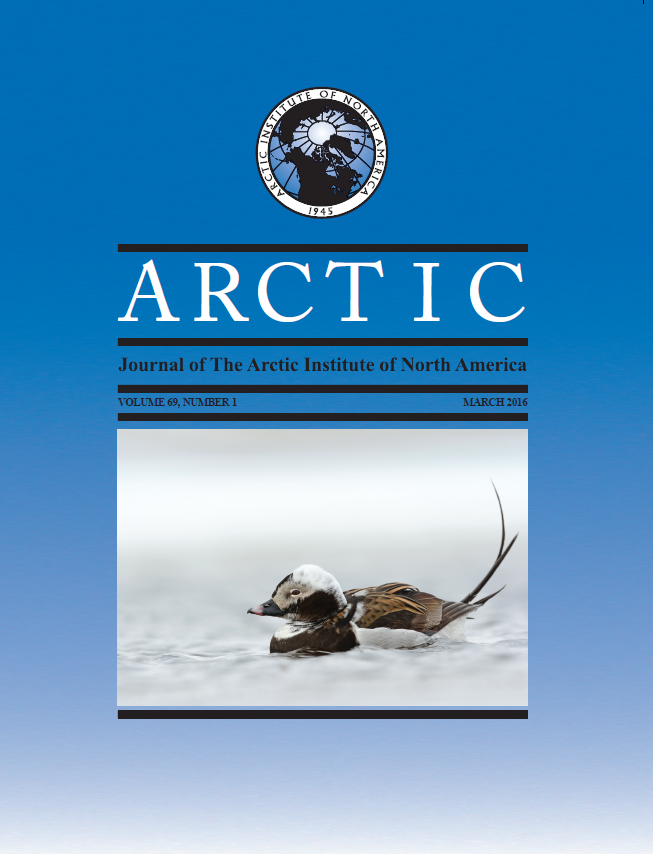Habitat Use and Foraging Patterns of Molting Male Long-tailed Ducks in Lagoons of the Central Beaufort Sea, Alaska
DOI:
https://doi.org/10.14430/arctic4544Ключевые слова:
Clangula hyemalis, disturbance, diurnal, home range, radio telemetryАннотация
From mid-July through September, 10 000 to 30 000 Long-tailed Ducks (Clangula hyemalis) use the lagoon systems of the central Beaufort Sea for remigial molt. Little is known about their foraging behavior and patterns of habitat use during this flightless period. We used radio transmitters to track male Long-tailed Ducks through the molt period from 2000 to 2002 in three lagoons: one adjacent to industrial oil field development and activity and two in areas without industrial activity. We found that an index to time spent foraging generally increased through the molt period. Foraging, habitat use, and home range size showed similar patterns, but those patterns were highly variable among lagoons and across years. Even with continuous daylight during the study period, birds tended to use offshore areas during the day for feeding and roosted in protected nearshore waters at night. We suspect that variability in behaviors associated with foraging, habitat use, and home range size are likely influenced by availability of invertebrate prey. Proximity to oil field activity did not appear to affect foraging behaviors of molting Long-tailed Ducks.Загрузки
Опубликован
2016-03-01
Выпуск
Раздел
Articles


